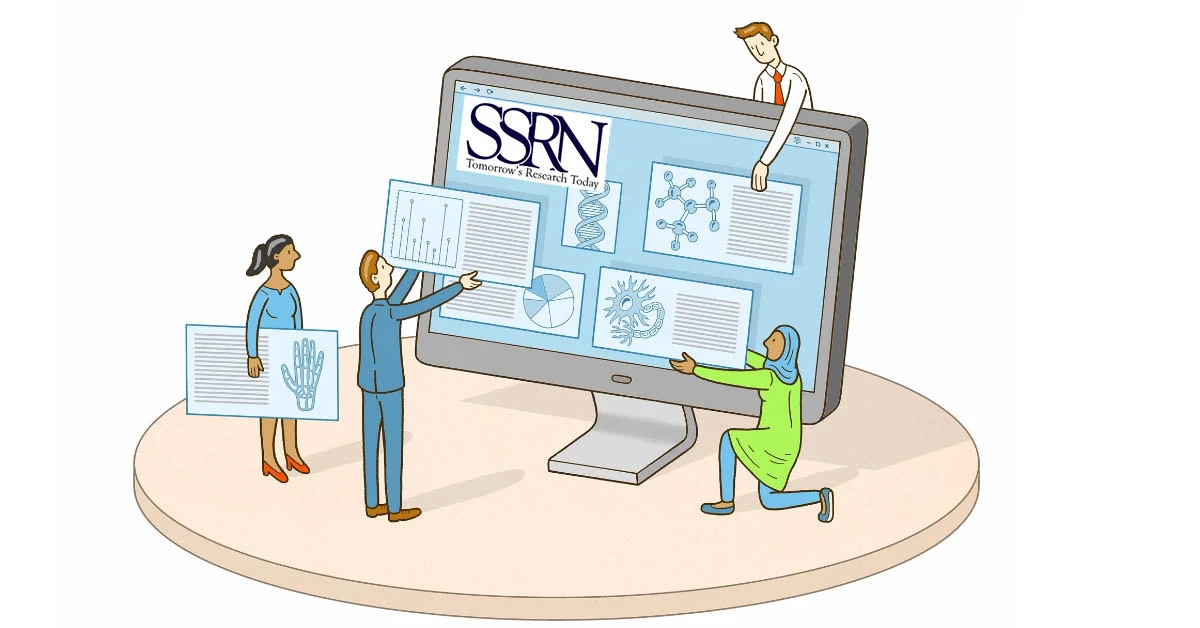More researchers than ever are using preprints — here’s why
February 1, 2022
By Ian Evans

The need for speed and information sharing is fueling the growth of preprint servers, which complement “traditional” peer-reviewed journals
Like most researchers, Dr Amit Batabyal, Arthur J Gosnell Professor of Economics at the Rochester Institute of Technology, needs to stay at the cutting edge of his field. That means keeping an eye on the latest work from his peers, ensuring his own research gets seen, and making sure he contributes something new to his discipline. For these reasons, preprints are an essential part of the research process for Amit:
However you come up with your ideas — in the bath, in the shower or wherever — you do not want to fall into the trap of reinventing the wheel. Research in economics journals can have a real time lag, so to make sure I don’t miss the most recent papers, preprint servers like SSRN … give you very easy access to the newest material you may be interested in.

Prof Amit Batabyal, PhD
Although preprints have been part of the research ecosystem for some time — SSRN itself was founded in 1994 — they’re regarded as a relatively recent development compared to the journals system. Amit himself talks about the way preprints complement the “traditional” journals system.
The use of preprints is also accelerating: over the past five years, SSRN, which joined Elsevier in 2016, has seen a 148% increase in users. In the same period, there has been a 50% increase in the number of downloads of preprints on SSRN, with downloads hitting almost 18 million in 2020 and close to 24 million in 2021.
Part of that growth may simply come from more people discovering the existence of preprint servers. Part of it stems from the response to pandemic, with researchers racing against time to better understand COVID-19 and come up with treatments and vaccines. And part of it comes from the expansion of the platform; one the Social Science Research Network, SSRN has been launching preprint servers in more areas, including life sciences and health, and now includes 70 disciplines.
“The benefit comes with two bites of the apple.”
Gregg Gordon
But the growth is also a result of researchers using SSRN in different ways. As Gregg Gordon, Managing Director of SSRN and Knowledge Lifecycle Management at Elsevier, points out, many researchers now submit their research papers to a preprint server at the same time as submitting to a journal. That way, their research gets out immediately while being reviewed for inclusion in their journal of choice, Gregg explained:
The benefit of that comes with a couple of bites of the apple The first bite gets your research into the conversation and allows interaction with other researchers. The second gets it out there early. The Lancet and Cell Press both do a great job of organizing peer review and turning an article around very quickly — but it’s not immediate.

Gregg Gordon
The advantage of speed — and the possibility of wider distribution — are crucial to Dr Mark Kamstra, Professor of Finance in the Schulich School of Business at York University in Toronto.
When you submit your paper to a preprint server at the same time as submitting an article, it makes it easier for people to find your work. I’ve had people contact me because they’ve seen my work on SSRN.

Prof Mark Kamstra, PhD
Mark’s work examines behavioral effects on asset pricing in indexes like the S&P 500, which includes everything from how seasons affect people’s investment activities to whether they’re likely to take bigger risks when a national sports team wins:
Through SSRN, I get to see papers sometimes years before they come out, see what people are working on and cite them properly. You see what new techniques people are working on, and what problems they’re looking at that you haven’t thought about.
Of course, timeliness is critical in fields closely tied to current events.
The early insight into others’ work and the early opportunity to share his own are two of the reasons Amit uses SSRN. As part of his economics research, he examines the ways investment can drive regional economic growth and the relationships between economics and geography and economics and environment.
Material in economics typically appears with a lag, sometimes very significant, between a paper being written and it being published. On SSRN, the work is put up very quickly, and it gives you access to the most commonly written material on any subject you’re interested in. So I use SSRN to make sure I don’t miss the recent writing on a particular subject.
For Mark and Amit, SSRN — and the preprint system in general — operate in tandem with the peer-reviewed journal system. As Amit put it:
If you want to increase the visibility of your work — almost in real time — then SSRN is a really good vehicle to get it distributed quickly. It’s a place everyone can access, regardless of which journals a library subscribes to.
Hesitancy around preprints
Nonetheless, there is still some hesitancy around preprints. In a 2018 blog post for the Science Media Centre, Chief Executive Dr. Fiona Fox suggested they are good for science — for the reasons Amit and Mark give — but bad for the public. One hesitation on the part of the author was that they enable scientific papers to reach the media — and the public — before being peer-reviewed, raising the risk of misinformation. This is a concern that lingers today, especially with the proliferation of misinformation during the pandemic.
As Gregg sees it, that risk exists with or without preprint servers, and with platforms like SSRN, you can still manage the process:
People are going to politicize things, whether it’s a preprint, a version of record, or the side of a bus. That’s the reality of the world we live in today. So instead of being frustrated with it, we just try to get up every morning and make sure that the stuff we put out is of the highest quality, understanding that we can’t be perfect.
That view is echoed by Mark, who pointed out that if people are inclined to act in bad faith, they will find a way in any system:
It’s an elbows up world, and there are unethical people. So, you may find people trying to jump ahead, using the system irresponsibly. But I’ve not seen a problem with SSRN. It’s actually helpful that there isn’t a super-strong filter on submissions — you’re not working with someone else’s idea of what’s ground-breaking or interesting.
Amit agreed:
In theory, there could be a danger of people abusing the system, but I don’t think there’s much chance of something that’s complete rubbish gaining traction. There’s already so much material there that the problem is more about figuring out what to pay attention to — although that is a more general problem.
Indeed, one method Amit uses to decide which preprints are most worthy of his attention are personal recommendations from his peers. Another is the track record or institutional affiliation of an author:
It’s a rule of thumb, but with whatever system is in place, it can be abused. There are documented studies of complete gibberish being submitted to refereed journals in the humanities and accepted for publication, so no system is perfect.
For researchers who have yet to use preprint servers, Mark has some parting advice.
If you’re unsure and anxious about the idea of someone stealing your ideas, you can always hold off uploading it until it’s very well developed and either in submission or published. At that point, you can upload the next to final version of the paper, and it will still be visible to researchers in institutions that don’t have subscriptions to every journal out there.
Contributor
